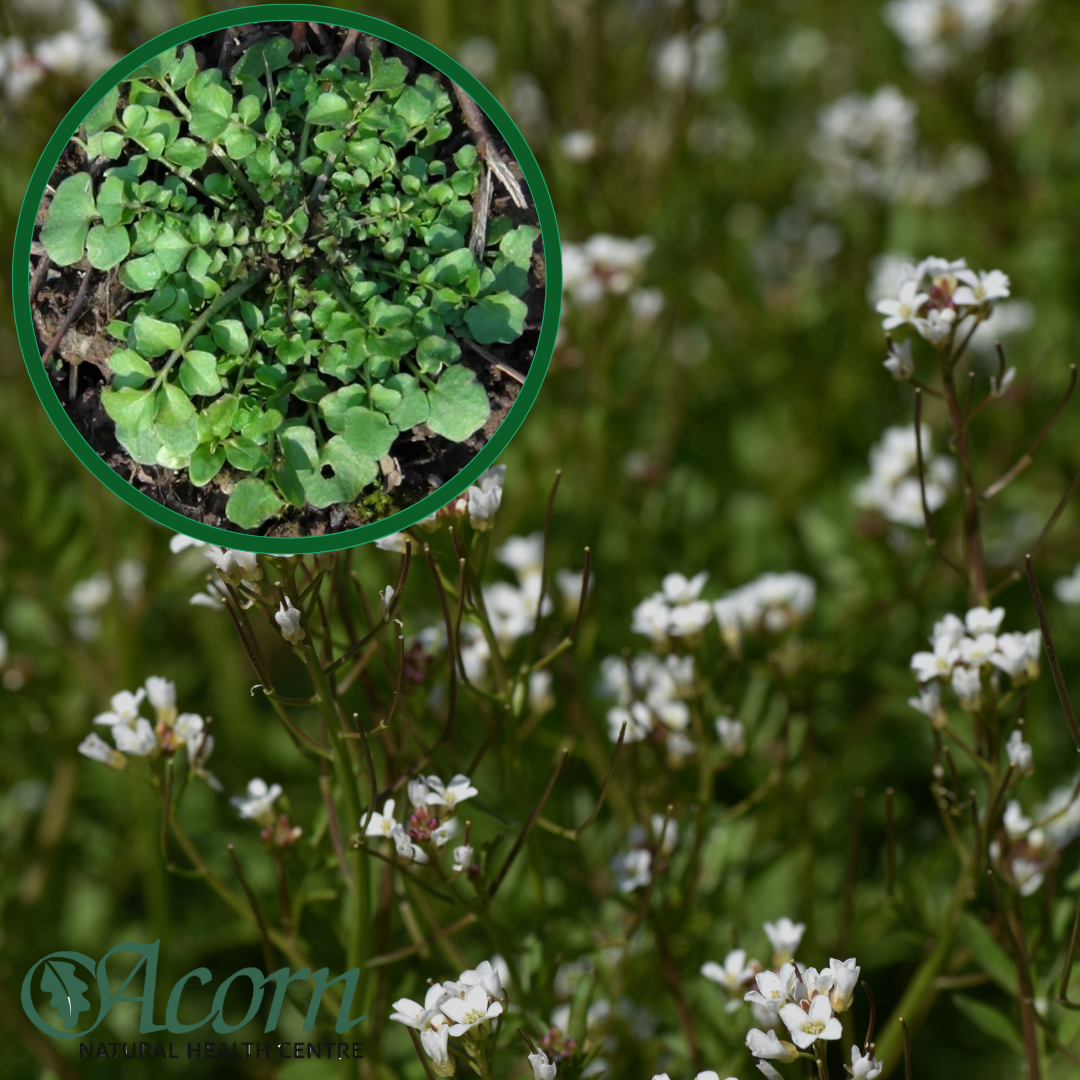Hairy bittercress, known scientifically as Cardamine hirsuta, is a fascinating herb that often goes unnoticed in gardens and wild areas. With its tender leaves and peppery flavour, this plant has a rich history of culinary and medicinal use, making it an excellent choice for our herb of the month.

Hairy bittercress typically grows in moist, shady areas, including gardens, woodlands, and roadside banks. It can be found throughout Europe and North America. The plant has small white flowers that bloom in clusters and can reach up to 30 cm (about 12 inches) in height. Its leaves are deeply lobed and can appear somewhat hairy, giving the plant its name. The leaves are oval-shaped and grow in a rosette pattern close to the ground.
Folklore and Traditional Uses
Historically, hairy bittercress has been utilized in folk medicine across various cultures. It was often used as a remedy for respiratory issues and digestive complaints. In some regions, it was believed to possess protective qualities against illnesses, as well as being a symbol of resilience due to its ability to thrive in diverse environments.
Nutritional Profile
Hairy bittercress is not only edible but also packed with nutrients. It is rich in vitamins A and C, as well as minerals like calcium and potassium. The leaves can provide a good source of antioxidants, which are essential for combating oxidative stress in the body.
Culinary Uses and Recipes
The leaves of hairy bittercress can be used fresh in salads, providing a delightful peppery kick. Here are a couple of simple recipes to try:
- Hairy Bittercress Salad: Toss fresh hairy bittercress leaves with mixed greens, cherry tomatoes, cucumber, and a light vinaigrette for a refreshing salad. Add nuts or seeds for an extra crunch.
- Pesto with Hairy Bittercress: Blend hairy bittercress leaves with garlic, nuts (like walnuts or pine nuts), Parmesan cheese, and olive oil for a unique twist on traditional pesto. Use it as a pasta sauce or a spread for sandwiches.
Hairy bittercress is a versatile herb that can enhance both your culinary dishes and your health. With its rich history, nutritional benefits, and unique flavour, it’s worth exploring in your kitchen or garden. Whether you enjoy it in salads or as a pesto, this herb can add a peppery touch to your meals. If you come across this delightful plant, consider incorporating it into your diet for a nutritious boost!
Precautions
Because hairy bittercress contains a high amount of oxalates, people who are prone to kidney stones should eat it in moderation.

